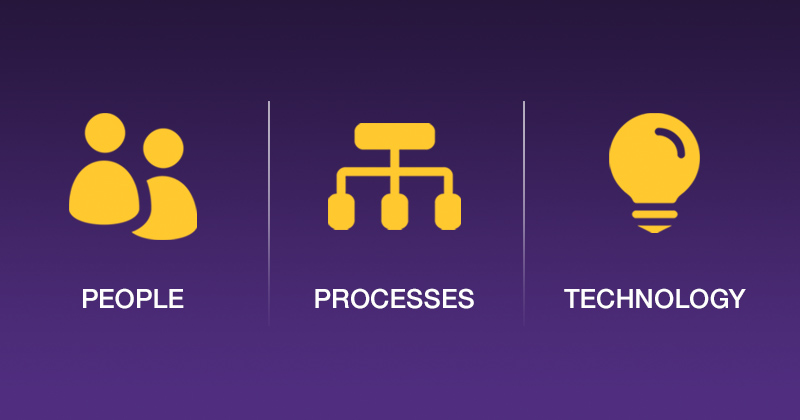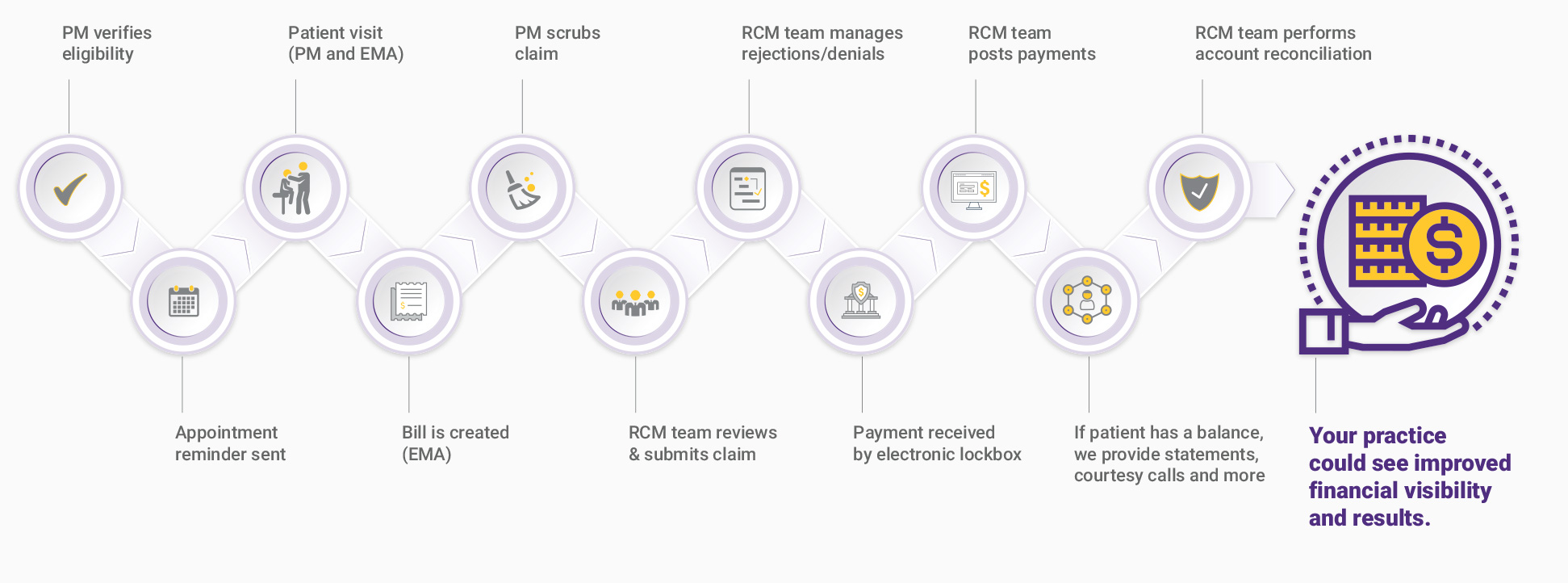Going Beyond Dermatology Billing Services

Learn how the right people, processes and technology can make a difference with comprehensive revenue cycle management (RCM)
This post was originally published on October 9, 2018 and updated on June 4, 2019.
Based on a 2018 Medscape Compensation report, dermatologists rank sixth when it comes to the average annual physician compensation. And each year, U.S. physicians lose an estimated $125 billion in revenue to poor billing practices often due to lack of understanding of the entire revenue cycle.
With industry changes in reimbursement, streamlining your dermatology billing process has become even more critical and you should consider working with a trusted vendor that functions as an extension of your team.
What is revenue cycle management (RCM)?
Revenue cycle management (RCM) is defined as the process of managing claims, payments and revenue collection, from before the patient is seen until after their bill is paid. Many practices and vendors claim to do RCM, but in reality, a lot of them are only concerned with getting the bills paid. This is called administrative claim processing or basic medical billing, and it’s not true RCM. Because it only addresses the final steps in the revenue cycle, it may not be enough.
Working with remote billing experts can help to simplify the process internally at the practice. It’s an ideal situation when you can go to one company not just for dermatology billing, but rather a package deal. I’m talking about a dermatology electronic health record (EHR) system, practice management, revenue cycle management, pathology and telehealth too.
The difference lies in the fact that comprehensive RCM compared to just dermatology billing considers each step in the process to help get bills paid efficiently and quickly. Addressing the whole cycle requires the right combination of people, processes and technology.
The People.
Working with an experienced dermatology staff and certified medical billers can make the RCM process that much more seamless. Ask about the size of the team, their experience, credentialing and how your account will be managed. Ask if you will have a dedicated advisor. Regular communications with an advisor can help you evaluate key performance indicators (KPIs) such as:
- Total clinical collections
- Net collection ratio
- Adjustments/write-offs
- Days sales outstanding
- Aged A/R analysis
Before going live with new billing services, learn how the vendor evaluates readiness to go live. Do they take the time to really understand and evaluate needs and areas for improvement? Ask questions on topics around workflow and system utilization, practice training, contracting, credentialing and online access. Like any good relationship, the lines of communication should be open and transparent.
The Medical Billing Processes.
When it comes to understanding your comprehensive medical billing process, there are three main steps: measure your billing performance, calculate key metrics and benchmark against industry standards. We’ll dive into each of these billing recommendations a bit more.
1. Measure your billing performance.
You need access to comprehensive data on timeliness and quality of the claims sent out as well as charges you collect. Some important values to track and evaluate each month include:
- Charges
- Contractual adjustments and write-offs
- Collections
- Total A/R balance
- A/R aging
- Patient encounters
Many comprehensive billing companies will provide a topnotch EHR, practice management, inventory management and analytics software to help track metrics. Having the right systems should help you generate billing reports and alleviate the burden of tracking such metrics manually, which could be quite challenging and simply inefficient.
2. Calculate key metrics.
Evaluate certain key metrics to understand the timeliness and quality of claims. Some of those metrics include:
- Days sales outstanding (DSO);
- Rejection rate which equals the percentage of claims payers reject;
- Denial rate which equals the percentage of your claims that payers deny;
- And net collection ratio (NCR), or how much you actually collect out of what you are owed.
3. Benchmark against industry standards.
To understand the current state of your practice’s revenue cycle, you’ll want to compare your practice’s performance to industry benchmarks. Once you’ve identified areas where your practice excels and others that may underperform, you’ll better understand your billing process.
But why put this responsibility on yourself or your staff? An external dermatology billing company can help keep you on track as it stays updated on the latest industry trends and changes and can turn insights into action.
The Technology.
Look for a medical billing vendor that does more than just dermatology billing. Seek out a trusted company that provides an all-in-one solution that integrates with the EHR and practice management systems, inventory management and analytics software.
This can give you a much more efficient way to aggregate and evaluate billing data by allowing you to generate up-to-date and digestible billing reports, as well as track your information in near-real time from a simple dashboard.
At the end of the day, you want to select a vendor with the qualifications to meet your dermatology practice’s needs and make sure they deliver comprehensive RCM and not just basic medical billing. Evaluating a potential RCM service? Consider these important elements:
- Dermatology billing experience
- Highly professional billers and revenue cycle advisors
- Quality service with proven business results
- Integration with EHR and practice management systems and inventory management system interface
- Reporting, benchmarking and analytics dashboards
- Claim management technology
- Patient management and automation services
- Complete process transparency and documentation
- Stronger-than-average performance metrics (NCR, DSO, etc.)
- Company stability and long-term commitment
- Strong leadership and management
- Satisfied clients and solid references
When it comes down to it, your dermatology practice is a business. Make sure the selected dermatology billing company has the proper people, processes and technology in place. By working with remote dermatology billing experts, you’ll better understand how your billing stacks up, improve bottom-line results and focus on what you do best—caring for your patients.

